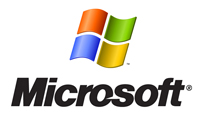
 In August, 2009, Allvoice sued Microsoft in the Western District of Washington, alleging infringement of its U.S. Patent No. 5,799,273. In December, 2013, the District Court granted Microsoft's motion for summary judgment finding that Microsoft did not infringe the asserted claims, and that claims 60-68 of the patent were invalid under 35 U.S.C. § 101. Allvoice appealed. The Federal Circuit panel of judges Prost, Dyk, and O'Malley heard arguments, and affirmed the District Court.
In August, 2009, Allvoice sued Microsoft in the Western District of Washington, alleging infringement of its U.S. Patent No. 5,799,273. In December, 2013, the District Court granted Microsoft's motion for summary judgment finding that Microsoft did not infringe the asserted claims, and that claims 60-68 of the patent were invalid under 35 U.S.C. § 101. Allvoice appealed. The Federal Circuit panel of judges Prost, Dyk, and O'Malley heard arguments, and affirmed the District Court.
Of particular interest is the reasoning behind the finding of invalidity in light of the claim language at issue. As a representative claim of those held invalid, claim 60 recites:
A universal speech-recognition interface that enables operative coupling of a speech-recognition engine to at least any one of a plurality of different computer-related applications, the universal speech-recognition interface comprising:
input means for receiving speech-recognition data including recognised words;
output means for outputting the recognised words into at least any one of the plurality of different computer-related applications to allow processing of the recognised words as input text; and
audio playback means for playing audio data associated with the recognised words.
 In other words, Allvoice's invention, as recited by claims 60-68, is directed to a form of application programming interface (API) that allows applications running on a computer to receive the output of a speech recognition program and "to link the relationship between the output data and the audio data to allow the audio data to be played back for any output data which has been dictated."
In other words, Allvoice's invention, as recited by claims 60-68, is directed to a form of application programming interface (API) that allows applications running on a computer to receive the output of a speech recognition program and "to link the relationship between the output data and the audio data to allow the audio data to be played back for any output data which has been dictated."
After discussing the parameters of § 101 in a broad sense, the Court focused in on the four statutory categories listed therein (machines, processes, articles of manufacture, and compositions of matter). Rather than analyzing whether the claims fell into one of the judicial exceptions to these categories (e.g., abstract ideas), the Court considered whether the claimed invention even fit into any of the categories at all.
Noting that "subject matter that falls outside the four statutory categories of § 101 . . . is not patent eligible," the Court explained that "except for process claims, the eligible subject matter must exist in some physical or tangible form." For instance, a machine must be "a concrete thing, consisting of parts, or of certain devices and combination of devices," an article of manufacture must be "a tangible article that is given a new form, quality, property, or combination through man-made or artificial means," and a composition of matter "requires the combination of two or more substances and includes all composite articles."
When before the Court, Allvoice explained that the interface recited by claim 60 consisted of software instructions. The Court did not find this point sufficient to result in the claims meeting the requirements of § 101, because while "[s]oftware may be patent eligible . . . when a claim is not directed towards a process, the subject matter must exist in tangible form." Claims 60-68, in the Court's view, were "software instructions without any hardware limitations" and therefore intangible. Allvoice's proposed construction of the claims' means-plus-function limitations did not involve a tangible form either.
Allvoice contended that "software must necessarily be in a machine readable, physical state in order to exist," and therefore is patent-eligible by its very nature. However, citing Digitech Image Techs., LLC v. Elecs. for Imaging, Inc., the Court observed that "instructions, data, or information alone, absent a tangible medium, is not a manufacture," and thus refused to import a tangible medium into Allvoice's claim language.
The four categories of statutory subject matter cover most anything that one can imagine. For computer-implemented inventions, however, claims directed to pure signals or disembodied data are not within the ambit of § 101. This case serves are a reminder to claim drafters that claiming software as anything but a process can be a tricky endeavor. After all, software instructions are indeed just another form of data, and without a medium to be stored on, lack physical structure.
But, this case also begs the question of what Allvoice could have done in order to mitigate this problem. For instance, if the preamble to claim 60 had read "an article of manufacture including a universal speech-recognition interface . . . ," would the outcome be different? Or, would Allvoice's claims be valid if they had been written in Beauregard style, such as "a non-transitory computer readable medium including computer instructions that, when executed by a processor, cause the processor to perform operations of a universal speech-recognition interface . . . ." Deviation from well-known and well-accepted preambles remains risky.
Allvoice Developments US, LLC v. Microsoft Corp. (Fed. Cir. 2015)
Nonprecedential disposition
Panel: Chief Judge Prost and Circuit Judges Dyk nd O'Malley
Opinion by Circuit Judge O'Malley